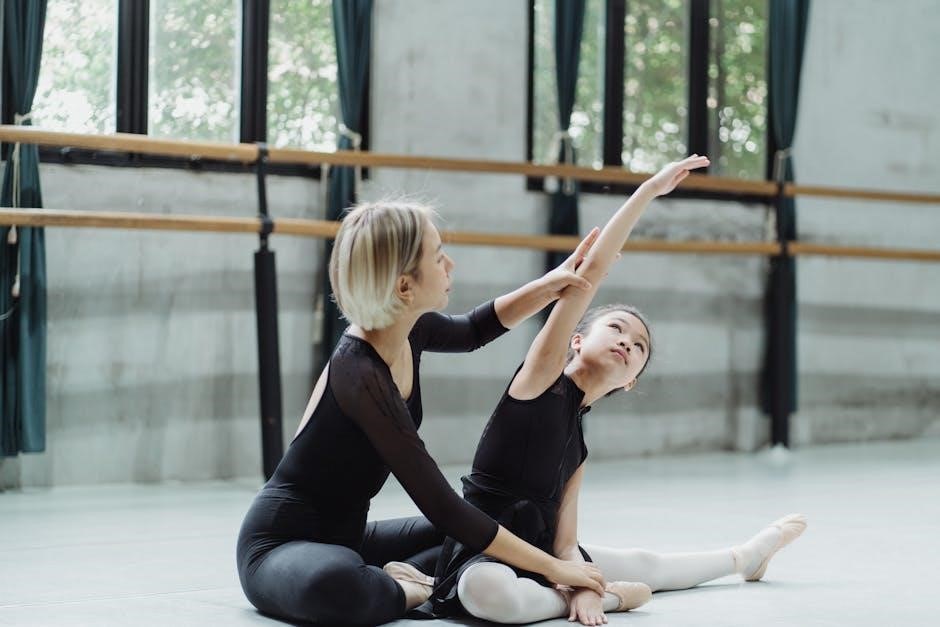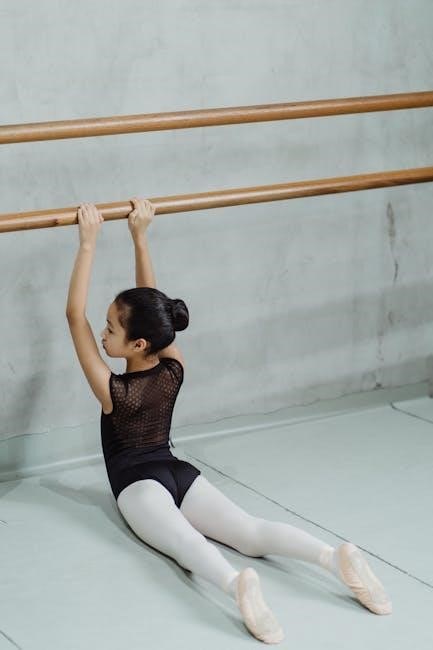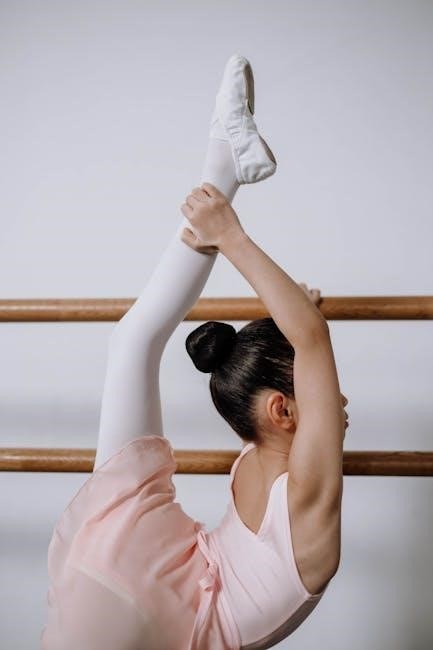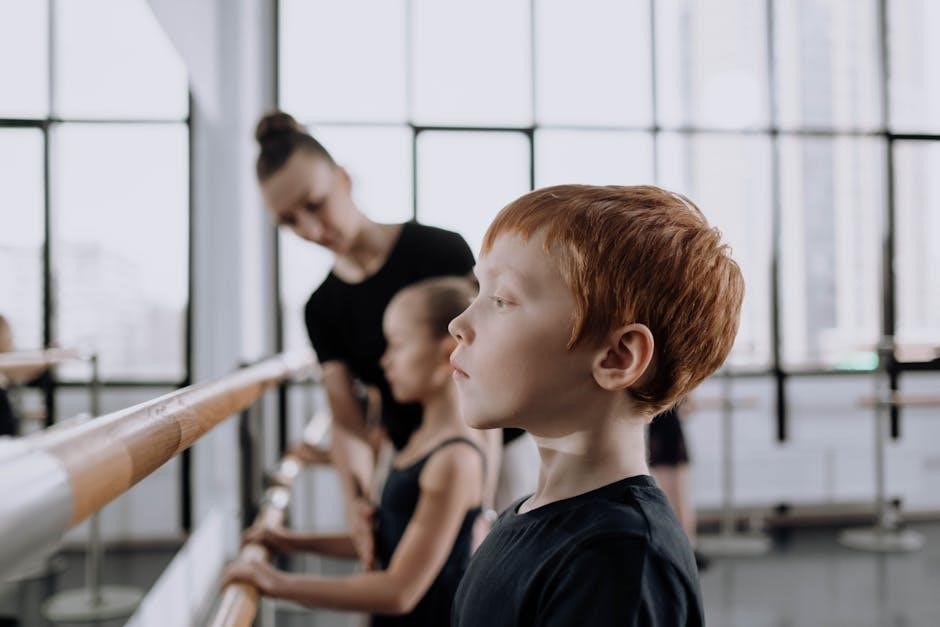Ballet barre exercises are a fundamental part of ballet training, providing support and balance as dancers prepare for more complex movements. Used in every ballet class worldwide, the barre helps improve posture, strength, and flexibility, making it a popular fitness choice for full-body toning and conditioning.
History of Ballet Barre Exercises
Ballet barre exercises trace their origins to the beginnings of classical ballet in the 15th century in Italy, later refined in France. The barre was initially used as a tool for dancers to warm up and prepare for performances, focusing on balance, alignment, and strength. Over time, it evolved into a structured system of exercises that became integral to ballet training worldwide.
The modern barre workout has retained its ballet roots while adapting to fitness trends, making it accessible to non-dancers. Its global popularity has led to various interpretations, but the core principles remain consistent. The barre continues to be a cornerstone in dance and fitness, offering a low-impact yet effective way to improve posture, flexibility, and overall physical conditioning.
Benefits of Ballet Barre Workouts
Ballet barre workouts offer a wide range of benefits, making them a popular choice for fitness enthusiasts and dancers alike. These exercises improve posture, balance, and overall alignment by strengthening the core and stabilizing muscles. They also enhance flexibility and range of motion, particularly in the hamstrings, hips, and thighs, which are often tight from daily activities.
One of the key advantages of barre workouts is their low-impact nature, making them suitable for individuals with joint issues or those recovering from injuries. The isometric movements help build long, lean muscles without bulk, giving a graceful, toned appearance. Additionally, barre exercises can boost cardiovascular endurance and burn calories, especially when performed in high-intensity intervals.
Perhaps most importantly, barre workouts are accessible to everyone, regardless of fitness level or prior dance experience. They provide a full-body workout that combines strength, flexibility, and coordination, creating a strong, balanced physique. With regular practice, individuals can experience improved overall health and a greater sense of confidence and grace in their movements.
Types of Ballet Barre Exercises
Ballet barre exercises include warm-up stretches, balance poses, and strength-building movements. They focus on improving flexibility, posture, and muscle tone, with variations suitable for all fitness levels and goals.

4.1 Warm-Up Exercises
Ballet barre warm-up exercises are essential for preparing the body for more intense movements. These exercises typically include gentle stretches, leg swings, and arm circles to increase blood flow and flexibility. They help prevent injuries by loosening muscles and improving range of motion. Common warm-up exercises at the barre involve standing or seated positions, focusing on the neck, shoulders, and hips. For example, battements (kicks) and plies (kneebends) are often incorporated to activate the legs and core. These movements are performed slowly and controlled, ensuring proper alignment and engagement of the correct muscles. The warm-up phase also helps mentally prepare the participant for the workout ahead, establishing a rhythm and focus. By starting with these foundational exercises, individuals can transition smoothly into more challenging barre workouts, ensuring safety and effectiveness. Warm-up exercises are a critical component of any successful ballet barre routine.
4.2 Stretching Exercises
Stretching exercises are a key component of ballet barre workouts, designed to improve flexibility, balance, and posture; These exercises target major muscle groups, such as hamstrings, quadriceps, and hip flexors, which are essential for ballet movements. Many stretches are performed while holding the barre for support, allowing for deeper extensions and better form. For example, grandes étirés (large stretches) involve reaching overhead and arching the back, while étirés au sol (floor stretches) focus on stretching the calves and Achilles tendons. Stretching exercises also enhance range of motion, making it easier to perform complex ballet movements. They are typically held for several seconds to maximize muscle lengthening. Proper breathing is emphasized to relax the body and deepen the stretch. These exercises not only improve physical flexibility but also contribute to overall grace and alignment, which are central to ballet technique. Regular practice of barre stretching can lead to greater mobility and reduced muscle tension.
4.3 Strength and Conditioning
Strength and conditioning exercises in ballet barre workouts are designed to build muscle endurance and power, essential for executing ballet movements with precision and control. These exercises often involve isometric holds, small pulsing movements, and controlled repetitions, targeting key areas such as the core, legs, and arms. For instance, battements (kicks) and fondues (melted movements) strengthen the thighs and calves, while port de bras (carriage of the arms) works the shoulder muscles. Many exercises are performed in a demi-plié position, which engages the quadriceps and glutes, enhancing overall lower body strength. The barre provides stability, allowing dancers to focus on proper form and intensity. These conditioning exercises not only improve physical resilience but also prepare the body for the demands of ballet technique. Regular practice leads to stronger, more defined muscles and better overall athleticism, making it easier to perform advanced movements with grace and precision. Strength and conditioning are integral to achieving the technical proficiency required in ballet.
4.4 Cool-Down Stretches
Cool-down stretches are an essential part of a ballet barre workout, helping the body transition from intense movement to relaxation. These stretches focus on improving flexibility, reducing muscle tension, and preventing soreness. Common cool-down stretches include hamstring and hip flexor stretches, which target areas worked during the workout. Exercises like child’s pose and seated forward fold promote relaxation and elongation of the spine. Gentle side stretches and neck rolls further release tension in the upper body. Cool-down stretches also enhance circulation, allowing oxygen and nutrients to flow to muscles, aiding in recovery. Many barre workouts incorporate deep, static stretches held for 20-30 seconds to maximize flexibility gains. Proper breathing techniques are emphasized during these stretches to deepen relaxation. Incorporating cool-down stretches ensures a balanced workout, leaving the body feeling refreshed and prepared for the next session.
Structuring a Ballet Barre Workout
A ballet barre workout typically lasts 30–60 minutes, combining warm-up, strength exercises, and stretching. It follows a structured flow, starting with activation, progressing to intensity, and ending with relaxation to ensure a balanced routine.
5.1 Duration and Frequency

A ballet barre workout typically lasts between 30 to 60 minutes, depending on the intensity and goals. For beginners, a 20–30 minute session is ideal to build endurance, while more advanced routines may extend up to an hour. Consistency is key, with 3–4 sessions per week recommended for noticeable results. Over time, this frequency helps improve flexibility, strength, and overall posture. It’s important to allow rest days to prevent overtraining, as muscles need time to recover. Even a short 20–30 minute barre workout can be effective for toning and stretching when time is limited. Many fitness experts suggest combining barre with cardio or other exercises for a well-rounded fitness regimen. The duration and frequency can be adjusted based on individual goals, whether it’s for maintenance, weight loss, or enhancing dance technique. Incorporating music further enhances the experience, helping to maintain rhythm and motivation throughout the workout.
5.2 Incorporating Music
Music plays a vital role in ballet barre workouts, enhancing rhythm, timing, and overall engagement. The right playlist can elevate the intensity and motivation during exercises. Typically, barre workouts use classical or contemporary music to match the flow of movements, creating a harmonious experience. The tempo of the music guides the pace of exercises, helping participants maintain proper form and synchronization. Many instructors recommend specific playlists or genres to complement the workout, ensuring a dynamic and enjoyable session. Some barre workouts even incorporate music with varying beats to transition smoothly between different exercise phases. For home workouts, fitness experts often provide suggested playlists or include music recommendations in their PDF guides. This integration of music not only makes the workout more enjoyable but also helps in maintaining focus and energy levels throughout the session. By aligning movements with music, participants can achieve better results and a more immersive fitness experience.

Safety Tips and Precautions
When performing ballet barre exercises, prioritizing safety is essential to prevent injuries and ensure an effective workout. Always maintain proper form and alignment, as poor posture can lead to muscle strain. Begin with a thorough warm-up to prepare your muscles for movement. Listen to your body and rest when needed, as overexertion can result in injury. Use a sturdy barre for support, ensuring it is at a comfortable height and securely installed. Wear appropriate attire, such as non-slip socks or ballet shoes, to maintain balance and grip. Avoid loose clothing that may obstruct movement or cause tripping. Stay hydrated throughout your workout to prevent fatigue and dizziness. Modify exercises to suit your fitness level, especially if you are new to barre workouts. Finally, consult a healthcare professional before starting a new exercise program, especially if you have any medical conditions or concerns. By following these precautions, you can enjoy a safe and rewarding ballet barre experience.

Resources for Ballet Barre Exercises
Discover free PDF guides and paid resources offering detailed ballet barre exercises. From Jessica Smith’s home workouts to Sculpt & Tone guides, these tools provide structured routines for all fitness levels to follow and enjoy.
7.1 Free PDF Guides
Free PDF guides are an excellent starting point for exploring ballet barre exercises. Many fitness experts, like Jessica Smith, offer downloadable resources that include step-by-step routines and visual cues. These guides are perfect for beginners, providing structured workouts that can be done at home. One popular option is the 5-Day Full-Body Barre Workout Challenge, which promises to sculpt and tone the body in just 30 minutes a day. Another resource is the Basic Principles of Classical Ballet guide, which offers foundational techniques to enhance your practice. These free guides often include modifications for different fitness levels, making them accessible to everyone. They also highlight the importance of form and alignment, ensuring a safe and effective workout. Whether you’re looking to improve flexibility, strengthen muscles, or simply try something new, free PDF guides are a fantastic way to begin your ballet barre journey without any financial investment.
7.2 Paid Resources
Paid resources for ballet barre exercises offer comprehensive and detailed guides tailored to specific fitness goals. For instance, programs like the Ballet Body Bootcamp provide in-depth workout videos and customizable plans, ensuring a more personalized experience. These resources often include advanced techniques and expert instruction, making them ideal for those looking to progress beyond basic routines. Additionally, paid guides like the Technical Manual and Dictionary of Classical Ballet offer a deeper understanding of proper form and alignment, which are crucial for maximizing results and preventing injuries. Many paid resources also come with exclusive content, such as nutrition advice and progress tracking tools, to support overall wellness. While free guides are a great starting point, paid resources are a worthwhile investment for those committed to achieving a stronger, more graceful physique through ballet barre exercises.
Ballet barre exercises offer a transformative way to improve posture, strength, and flexibility while enhancing overall grace and coordination. With its origins in classical ballet, this low-impact workout is accessible to all fitness levels, making it a versatile choice for both dancers and fitness enthusiasts. Whether performed in a studio or at home, ballet barre exercises provide a full-body workout that tones muscles, boosts endurance, and promotes balance. The availability of free and paid resources, including guides like the Ballet Body Bootcamp and Technical Manual and Dictionary of Classical Ballet, ensures that anyone can incorporate these exercises into their routine. By combining artistic movement with physical fitness, ballet barre exercises create a holistic approach to wellness that fosters confidence and poise. Embrace this timeless practice to achieve a stronger, more graceful body, no matter your fitness goals or experience level.
